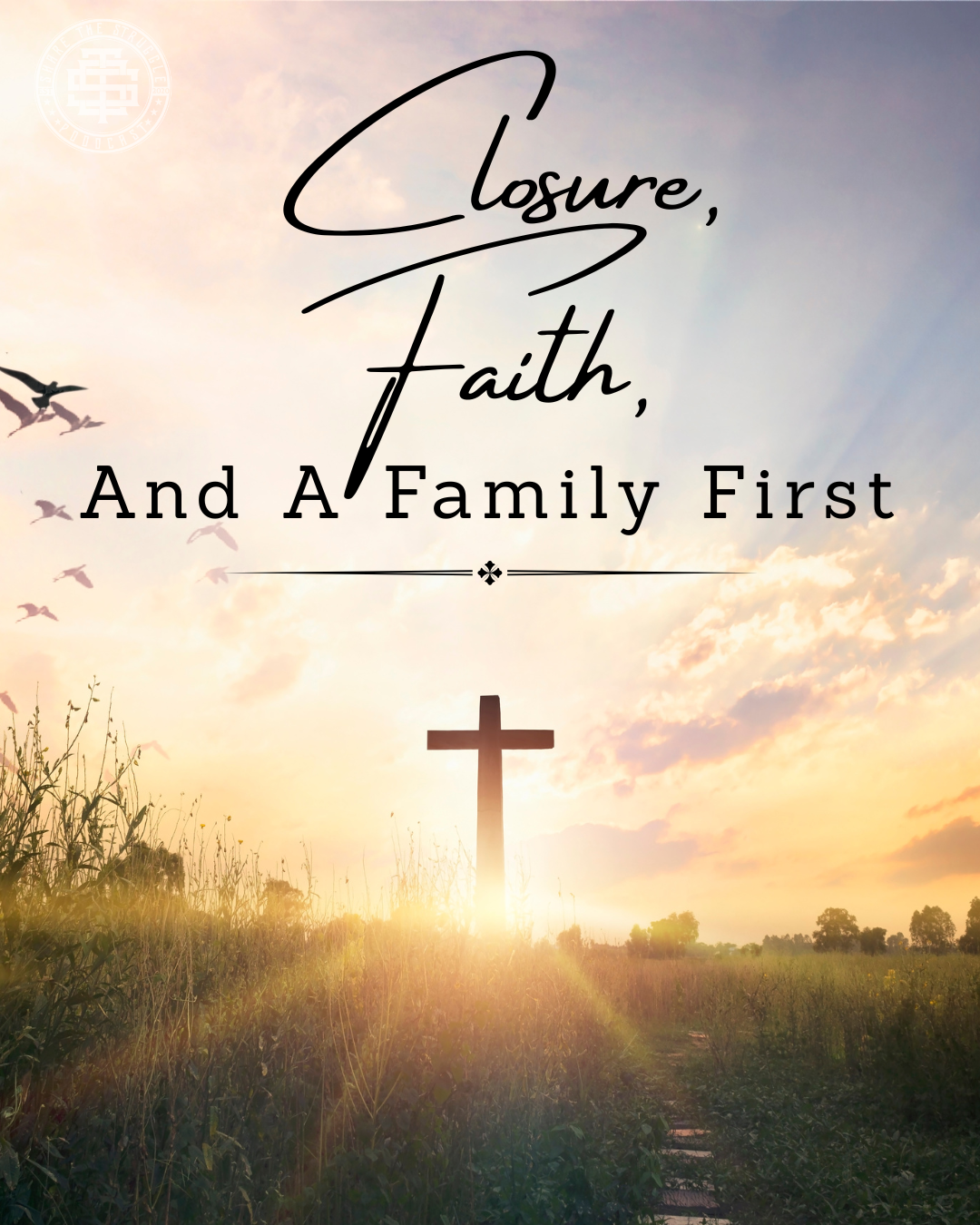Closure, Faith, And A Family First

Grief rarely follows a clean script. One of us said a final goodbye at a small graveside service, placing a mother’s ashes beside her father, and the room for words felt both too large and too small. There was no preacher, no formal liturgy, just a circle of the few who mattered, each offering truth, tenderness, and the relief of closure after months of delay. Addiction, investigation, and strained family ties stretched the grieving process far past the point where most casseroles go cold. The impact was real: wandering downtown out of instinct, scanning familiar corners, hoping and dreading to see a face that would not return. Saying goodbye didn’t erase the pain, but it lifted weight. The healing began not by forgetting, but by deciding what to hold: a wedding-day smile, a laugh without shadows, and the courage to let go of what no longer serves a future.
What followed surprised us: a reaction to shock that became a reorientation to faith. Doomscrolling gave way to a TikTok live where a warm voice offered prayer and presence. “I’m ready” appeared in the comments before the mind could argue, and a new habit caught: a Bible mailed by a stranger, tabs added with care, an app guiding daily chapters, and a promise to finish in a year. Faith became active and practical, not theoretical. Baptism moved from idea to intention: a public step to mark an inward shift and align our family’s story. The plan included our daughter, because meaning matters more when it shapes the people we love. Naming godparents wouldn’t be a title; it would be a charge, anchored by commitment instead of sentiment.
We walked into church together for the first time as a family, not for a wedding or funeral but for worship. It didn’t look like childhood memory. A repurposed building opened into a bright lobby, a kids’ check-in that felt secure, and a sanctuary filled with music that didn’t perform at us so much as invite us. Our daughter lasted forty minutes in class, then swayed in our arms to lyrics projected on the wall. The message landed with clarity: empty the cup. You cannot fill a vessel with coffee, wine, vinegar, and salt water and expect sweetness. You must pour out what clutters the heart—fear, distraction, indulgence, resentment—so something better can be received. That image cut through small-business stress, new-parent anxiety, and grief’s static. It offered a daily practice: notice what fills you, then choose to pour out what poisons.
Faith also asked us to face an old fear: feeling behind. Many grow up fluent in scripture; we grew up around it. The honest answer to “How much do you know?” is often “not enough.” A simple line changed that: aim to know a little more about Jesus today than yesterday. That goal turns intimidation into invitation. It’s measurable, merciful, and motivating. Read a chapter, listen on the drive, compare notes, write in the margins, and treat progress as progress. When we pair that habit with community—a church that teaches clearly, a children’s program that welcomes, mentors who cheer our steps—growth feels possible. Grief doesn’t vanish and responsibility doesn’t soften, but the weight shifts. We are learning to mark an ending with dignity, begin again with faith, and parent with both truth and love. The cup is being emptied. There is room now for what can heal.







